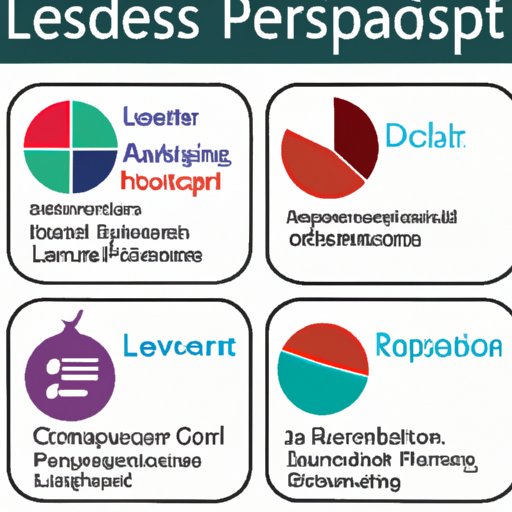I. Introduction
Leadership development programs are crucial for organizations of all sizes. They help to identify and nurture tomorrow’s leaders while retaining and improving current talent. In a world where the landscape of work is continually changing, a strong leadership development program is a competitive advantage, helping employees to stay engaged, motivated and committed. If designed appropriately, the program can provide unique development opportunities, attract and retain top talent, as well as help to align organizational needs with personal and professional growth.
This article will discuss how to build and implement a successful leadership development program. We will explore the various steps involved, identifying the need, designing the program, evaluating the program, measuring success through metrics, and more.
II. Identifying the Need for Leadership Development
The first crucial step in building a successful leadership development program is identifying the need for it. If there’s no problem identified, there’s no issue to solve. Organizations must conduct a thorough need assessment to identify where leadership development is required, and avoid generic attempts to solve ill-defined problems.
So how do you identify areas that require leadership development? There are a few signs to look out for, such as high turnover rates, low employee engagement, inconsistent performance, and declining business results. Another approach is to conduct surveys and hold regular meetings with employees and leadership teams to evaluate their specific development needs. These methods will help to provide insights and points of reference to frame the leadership development program.
To identify specific development needs, focus on key areas that may require improvement. For example, communication, performance management, conflict resolution, decision-making, and change management are critical skills to develop when building future leaders.
III. Designing a Leadership Development Program
After identifying the need, the next step is to design a leadership development program. A well-crafted leadership program may include a series of specific activities, such as mentorships, coaching, leadership courses, and workshops, leadership assessments, and networking events.
When designing a leadership development program, it is essential to consider the varying needs of different employee levels, regions, skill needs, and individual career plans. Tailoring the program to meet individual needs can help to improve engagement, and increase the program’s effectiveness. Factors to consider when designing a leadership program include content framework, experiential learning opportunities, expected results, timeline, and accountability.
IV. Case Studies
It can be helpful to look at the experiences of other organizations that have successfully implemented a leadership development program. Examining case studies of organizations that have designed and implemented a successful program can provide insights, highlighting essential factors to consider when implementing a development program. Studying these examples can help organizations identify potential blind spots and challenges in the design process and provide tools to help overcome such obstacles.
One case study is of Ernst & Young, who implemented a program that focused on providing their employees with well-rounded long-term development. The results showed an improvement in employee morale, job satisfaction, and retention rates.
V. Expert Interviews
Interviewing leadership development experts can give deeper insights into the process of implementing a successful program. Experts can provide solutions to specific issues, suggest innovative practices and help organizations stay up-to-date with industry best practices.
When considering who to interview, industry leaders, academics, and professional associations are an excellent place to start.
VI. Best Practices
Based on the experience shared in case studies and insights from expert interviews, we can provide a list of best practices to follow when designing and implementing a leadership development program. These include identifying the needs of the organization; designing the program to align with organizational development goals, assigning clear program objectives, and setting measurement criteria to evaluate success.
Moreover, establishing partnerships with external leadership development experts, quality control checks, and continuous improvement practices, such as regular surveys, feedback from employees, and updating program content regularly, enhances the effectiveness of the program.
VII. Metrics and Evaluation
Evaluating a leadership development program measures its effectiveness. Metrics can help to highlight the strengths and areas that require improvements. Some of the key metrics used to evaluate program effectiveness include employee engagement levels, program completion rates, internal promotion rates, improved employee performance, and retention rates.
The results of the evaluation should provide insights on the effectiveness of the program and areas that require improvement. Continuously revising the program should include monitoring and improving the program based on identified weaknesses.
VIII. Conclusion
A successful leadership development program is critical for organizational growth, workforce development, and sustainable business results. We have examined how to identify the need for a leadership development program, how to design and implement the program, how to evaluate the program’s effectiveness using metrics, and best practices to follow when designing a program.
Now that you have the foundational knowledge to start building your leadership program, the best course of action is to start by identifying your organization’s areas that require leadership development. Take the time to delve deeper, be creative with designing, partner with industry experts, and continuously evaluate the effectiveness of the program. Doing so will go a long way towards successfully fostering a leadership-rich workplace culture.
(Note: Is this article not meeting your expectations? Do you have knowledge or insights to share? Unlock new opportunities and expand your reach by joining our authors team. Click Registration to join us and share your expertise with our readers.)
